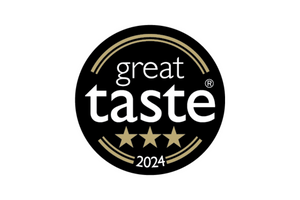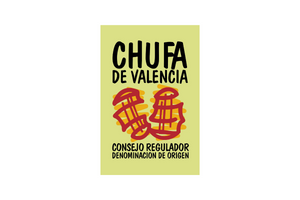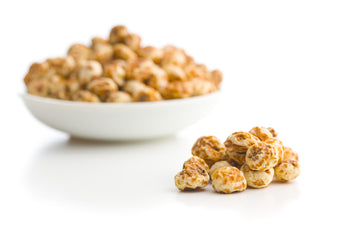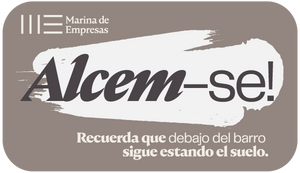Adapting to the Cocoa Price Surge: Vegan Milk Chocolate for Independent Bean-to-Bar Makers
May 13, 2025
I. Navigating High Cocoa Prices: The Strategic Shift to Vegan Milk Chocolate
A. The Unprecedented Challenge of Soaring Cocoa Prices for Artisanal Makers
The global cocoa market is currently experiencing a period of extraordinary volatility, with prices reaching historical highs. Factors such as adverse climate conditions, the spread of crop diseases like black pod, and persistent supply chain instabilities have converged to create this challenging environment. Some market reports have indicated prices per metric ton escalating to unprecedented levels, underscoring the severity of the situation for all chocolate manufacturers.
For independent bean-to-bar chocolate makers, this price surge presents an acute threat. Cocoa, in the form of beans and butter, typically represents their single highest ingredient cost. Consequently, the dramatic rise in cocoa prices directly erodes already carefully managed profit margins, jeopardizing the financial sustainability of these often small, passion-driven businesses. Businesses that have built their reputation on high-cocoa content dark chocolates are particularly vulnerable, as their core product lines are most exposed to these input cost escalations.
The current market dynamics reveal more than just a temporary price spike; they point towards deeper, systemic vulnerabilities within the global cocoa supply chain. The persistent influence of climate change, the ongoing threat of diseases affecting cocoa crops, and various geopolitical factors suggest that a reliance solely on traditional cocoa sourcing, especially for high-percentage dark chocolates, carries increasing long-term risk. Therefore, exploring alternatives is not merely a strategy for margin protection but an essential consideration for future-proofing the business against ongoing supply uncertainties.
Furthermore, the situation intensifies an existing ethical consideration. While higher market prices for cocoa could theoretically benefit farmers who have historically been underpaid, the extreme volatility and the immense pressure on chocolate makers margins can strain the direct trade relationships that many independent bean-to-bar makers have painstakingly cultivated. Makers who have long championed better prices for farmers and often pay significant premiums may find it incredibly difficult to absorb these massive cost increases while maintaining consumer price points and their commitments to fair farmer compensation, especially as consumers themselves are reportedly cutting back on high-priced discretionary items.
B. Vegan Milk Chocolate: A Viable Path to Margin Restoration and Market Diversification
In this challenging economic landscape, vegan milk chocolate emerges as a strategically compelling alternative for bean-to-bar makers. A key characteristic of milk chocolate, and its vegan counterpart, is its inherently lower cocoa content compared to dark chocolate. Typical dark chocolate bars can range from 60% to over 90% cocoa content, whereas milk chocolates, including vegan varieties, often fall within the 37% to 42% cocoa content range. This significant reduction in the proportion of cocoa used per bar can directly alleviate the intense cost pressures stemming from historically high cocoa prices. The Spanish ingredient specialist Tiger & Bean explicitly notes that with cocoa prices at record levels, opting for their plant-based milk powders allows makers to decrease cocoa content and thereby lower chocolate production costs.
However, embracing vegan milk chocolate should be viewed as more than a defensive cost-cutting measure. It represents an offensive strategy for market expansion and diversification. This shift allows artisanal makers to tap into a rapidly growing and ethically aligned market segment. By thoughtfully developing and marketing vegan milk chocolate, makers can potentially attract new customer demographics—those who are vegan, lactose-intolerant, flexitarian, or simply curious about plant-based options—without necessarily alienating their existing dark chocolate clientele, provided the new offerings are communicated effectively and maintain the brand's quality standards.
The current high cocoa price environment, while undeniably difficult, can also serve as a powerful catalyst for innovation. Bean-to-bar chocolate makers are renowned for their creativity, particularly in exploring the nuanced flavor profiles of different cocoa origins and their meticulous craftsmanship. This inherent ingenuity can now be extended to the realm of plant-based milk alternatives. Experimenting with ingredients like oat, coconut, tigernut, and various cereal or nut-based powders offers a new palette to develop unique and desirable products that can stand out in the market. This constraint-driven innovation can lead to novel flavor combinations and textural experiences, further differentiating the artisanal maker.
C. Consumer Appetite: Strong Growth and Favorable Trends in the Vegan Chocolate Market
The strategic appeal of vegan milk chocolate is significantly bolstered by strong consumer demand and favorable market trends. The global vegan chocolate market has demonstrated robust growth over the past several years. Market valuations have surged from an estimated $681 million in 2018 to approximately $1.2 billion currently, with projections indicating a continued expansion to around $3.8 billion by 2033, reflecting a compound annual growth rate (CAGR) of nearly 12%. Other market analyses corroborate this strong growth trajectory, with the vegan chocolate confectionery market specifically projected to reach $1.87 billion by 2030, growing at a CAGR of 15% from 2025 to 2030 6, and another estimate suggesting a market value of $1.33 billion in 2023, expected to reach nearly $3.00 billion by 2030 (CAGR 12.3%).
The primary drivers behind this expansion include growing consumer awareness of ethical issues related to animal welfare and environmental sustainability, increasing health consciousness, the rising prevalence of lactose intolerance, and the broader adoption of flexitarian and vegan diets. Key consumer demographics include health-conscious millennials and environmentally aware Gen Z individuals, who place a high value on ethical production, sustainability, and overall product quality. For many, vegan chocolate is perceived as a "better choice for everyone," often associated with organic ingredients, lower sugar content, and higher antioxidant levels compared to traditional chocolate.
Significantly for bean-to-bar makers, their typical clientele may be particularly receptive to vegan milk chocolate offerings. Moreover, the vegan milk chocolate sub-segment itself is experiencing notable growth. Reports indicate that milk chocolate (plant-based versions) accounted for a leading revenue share in the vegan chocolate confectionery industry in 2024, with increasing availability and improved taste driving this expansion. This directly supports the proposition that developing vegan milk chocolate is a timely and market-aligned strategy.
The values that underpin the burgeoning vegan chocolate market—such as a demand for ethical practices, high quality, transparency in sourcing, and sustainability—are often already the cornerstones of independent bean-to-bar chocolate makers. These makers have long advocated for better prices for cocoa farmers and frequently engage in direct sourcing. This inherent alignment means that the target audience for premium vegan milk chocolate is likely to be highly receptive to the established brand ethos of these producers, making the transition to offering vegan options a natural brand extension rather than a compromise.
Furthermore, while the vegan milk chocolate market is expanding, there appears to be an unmet demand for higher-quality options. A survey commissioned by Barry Callebaut indicated that less than half (45%) of respondents were satisfied with the plant-based milk chocolates currently available to them, suggesting a significant opportunity for product innovation. This gap in the market presents a clear opening for artisanal bean-to-bar makers, who specialize in premium quality and nuanced flavor profiles, to create superior vegan milk chocolate offerings that can capture consumer attention and foster loyalty.
II. Crafting Compelling Vegan Milk Chocolate: Formulation, Sourcing, and Quality
A. Essential Plant-Based Ingredients for Dairy-Free "Milk" Chocolate
Developing a high-quality vegan milk chocolate requires a careful selection of plant-based ingredients to replace traditional dairy milk. Each alternative brings unique characteristics in terms of flavor, texture, cost, and processing requirements.
Common dairy alternatives include:
-
Coconut Milk/Cream: Widely used for its ability to impart creaminess and a pleasant melt, coconut often contributes a distinct, though sometimes subtle, coconut flavor.
-
Oat Milk/Flour: Praised for its relatively neutral flavor profile and potential for creamy textures, oat-based ingredients have become popular. However, sourcing oat milk powder can sometimes be challenging, and if not formulated or processed correctly, it can lead to a grainy texture or require complex steps like gluten removal and dehydration.
-
Rice Powder/Milk: Rice-derived ingredients (powder, flour, or milk) are frequently found in vegan chocolates, partly due to their allergen-friendly profile and cost-effectiveness. However, they can sometimes lack the desired creaminess and may impart excessive sweetness if not carefully balanced.
-
Nut Milks (Almond, Cashew, Hazelnut): Various nut-based powders can offer good creaminess and contribute unique, often complementary, flavor notes. Hazelnut milk, in particular, has been noted for providing a creamy mouthfeel that closely mimics dairy milk. Cashew is also used, for example, in one of Tiger & Bean's M!lk Crumb formulations.
-
Tigernut: An emerging and promising alternative, tigernut is a small root vegetable (not a nut, despite the name, making it suitable for many nut-free formulations) that can be processed into a fine flour, or better still a powder can be made from tigernut extract that is free from insoluble fibre which has been shown to produce exceptional sensory profiles. Tigernut extract is a key ingredient in most of Tiger & Bean´s products.
-
Sunflower Protein: A more recent plant-based milk alternative, sunflower protein powder can be cost-effective and has been shown to produce chocolate with exceptional sensory profiles. Sunflower is not an allergen, its flavour is slightly nutty and its fats lend a distinct creaminess to chocolate formulations. Sunflower protein is a key ingredient in some of Tiger & Bean´s products.
Beyond the milk alternative, sweeteners such as organic cane sugar, maple sugar, or coconut palm sugar are used. Additional fats, primarily more cocoa butter, are often necessary to achieve the desired richness and melt, though some plant-based milks like coconut naturally contribute fat. Alternative vegetable fats such as Cocoa Butter Equivalents (CBE) and Cocoa butter substitutes (CBS) can also be employed to mimic cocoa butter's properties, potentially offering cost savings.
Table 1: Comparative Overview of Plant-Based Milk Alternatives for Vegan Chocolate
|
Base Ingredient |
Flavor Profile |
Textural Impact |
Common Allergens |
General Cost Indication |
Processing Considerations for Bean-to-Bar |
Notable Examples/Sources |
|
Coconut Milk/Cream |
Distinct, can be sweet, tropical |
Very creamy, smooth melt |
None (typically) |
Medium |
Powder or creamed form ideal; fat content contributes to richness. |
Raaka 3, Askinosie 10, Ombar 11 |
|
Oat Milk/Flour |
Neutral to slightly sweet, oaty |
Can be very creamy; risk of graininess if not managed |
Gluten (unless certified GF) |
Medium to High |
Powder preferred; gluten removal/dehydration may be needed for some sources; careful ratio balancing. |
Raaka 3, HiP 11 |
|
Rice Powder/Milk |
Neutral to sweet |
Can lack creaminess; may be thin |
None (typically) |
Low to Medium |
Powder form common; may require other ingredients to boost creaminess. |
NOMO 11 |
|
Almond Milk Powder |
Mildly nutty, slightly sweet |
Good creaminess |
Tree Nuts |
Medium |
Powder form; flavor can complement certain cocoas. |
Pico 11 |
|
Cashew Milk Powder |
Mild, creamy, slightly sweet |
Very creamy |
Tree Nuts |
Medium to High |
Powder form; good for rich texture. |
Tiger & Bean M!lk Crumb 003 4 |
|
Hazelnut Milk Powder |
Distinctly nutty, rich |
Exceptionally creamy, dairy-like |
Tree Nuts |
High |
Powder form; strong flavor profile. |
Pico 11 |
|
Tigernut Powder |
Slightly sweet, nutty, earthy, "exotic" |
Can be very smooth if fibers removed |
None (typically) |
Medium to High |
Fiber removal is key for smoothness (e.g., Tiger & Bean process); unique flavor. |
Tiger & Bean m!lk crumb |
|
Sunflower Protein |
Mild "nutty" flavor |
Can be creamy; may affect viscosity |
None (typically) |
Medium |
Powder form; potential for higher melting point; flavor can be a factor. |
Tiger & Bean m!lk crumb |
B. Mastering Texture, Flavor: Overcoming Technical Hurdles
Creating exceptional vegan milk chocolate involves navigating several technical challenges, particularly concerning texture, flavor, and shelf-life.
Texture: Replicating the luxurious, creamy mouthfeel of traditional dairy milk chocolate is often the most significant hurdle for most vegan milk chocolate. Different plant-based milks offer varying degrees of success.
Solutions include meticulous ingredient selection, precise balancing of ratios, increasing the cocoa butter content to compensate for the absence of dairy fat, or incorporating natural fibres like inulin.
While ingredients like hazelnut milk powder or high-quality creamed coconut can yield excellent creaminess, others like rice powder might fall short. When it comes to high fibre cereals like oat and tigernut, the processing of these flour is critical; poor processing can lead to a "floury" or "grainy" mouthfeel which is caused by insoluble fiber even when refined to a particle sizes of 20µm. At Tiger & Bean we address issues with mouthfeel by removing coarse insoluble fibers from our plant-based powders.
Flavor: The flavor profile of vegan milk chocolate must be carefully managed. The chosen plant-based milk can either provide a neutral background, allowing the cocoa's origin notes to shine, or contribute its own distinct character. Oat milk is often selected for its neutrality, whereas coconut can impart a complementary flavor that some brands embrace. Sweetness levels also require careful calibration, as some plant-based milks or powders can be inherently sweeter or, conversely, require more sweetening than others.Tiger & Bean's pre-sweetened powders simplify one aspect of flavor balancing but necessitate careful integration with the chosen cocoa's bitterness and flavor profile.
C. Sourcing Strategies for Plant-Based Ingredients: Balancing Quality, Cost, and Supply
The quality and consistency of the chosen plant-based milk powders or alternatives are paramount for producing high-end vegan milk chocolate. However, sourcing these ingredients can present challenges. Some specialized items, like certain types of oat milk powder, have been noted for limited supplier availability. Therefore, establishing relationships with reliable suppliers who understand the specific requirements of chocolate making—such as particle size, fat content, flavor neutrality (or specific desired flavor), and processing characteristics—is crucial. The principle of diversifying cocoa sourcing to mitigate supply risks can be prudently extended to critical plant-based ingredients as well.
Cost is another significant consideration. Plant-based milk powders, particularly specialized ones like oat milk powder, can be more expensive than their conventional dairy milk powder counterparts. This is often due to differences in economies of scale, the niche nature of some ingredients, and potentially more complex processing.
Bean-to-bar makers who have built their brand on the transparency of their cocoa sourcing will find that their discerning customers may expect similar rigor for other key ingredients. As plant-based milk powders become a significant component of a product, questions about their origin, farming practices (e.g., for nuts, oats, or coconuts), and processing methods are likely to arise. This necessitates extending the brand's commitment to transparency to these new ingredient streams.
The "clean label" trend also heavily influences ingredient selection. Consumers are increasingly seeking products with simple, recognizable ingredients and minimal additives. This preference will guide makers towards plant-based options that are perceived as natural and minimally processed, potentially steering them away from ingredients that involve extensive chemical modification or a long list of stabilizers and emulsifiers.
D. Upholding Ethical Standards in Vegan Chocolate Production
Transitioning to vegan milk chocolate offers an opportunity to reinforce and even expand a brand's ethical commitments. While reducing overall cocoa usage, it remains vital to maintain the commitment to fair compensation for cocoa farmers for the beans that are used. The ethical sourcing principles applied to cocoa should ideally extend to the new plant-based ingredients. This includes considering fair labor practices, sustainable farming methods for the base crops (e.g., coconuts, oats, tigernuts), and environmental impact.
Transparency with consumers is paramount. This involves clear and honest communication about all ingredients used, their origins (where feasible and relevant), and the sourcing practices employed.
Finally, rigorous allergen control is non-negotiable. Preventing cross-contamination is essential to ensure that vegan-labeled products are safe for consumers with dairy allergies or other sensitivities. This may involve dedicated equipment, thorough cleaning protocols between production runs.
For bean-to-bar makers already distinguished by their ethical cocoa sourcing, the launch of a vegan chocolate line can serve to amplify their overall ethical brand message. Veganism itself is an ethical stance for a significant and growing consumer segment. By ensuring that the new plant-based ingredients are also sourced with integrity, the brand reinforces and broadens its ethical appeal, creating a more powerful and cohesive narrative that resonates deeply with values-driven consumers.
III. Tiger & Bean: A Specialized Partner for Vegan Milk Chocolate Innovation
A. Our Mission: Supporting Bean-to-Bar Excellence
At Tiger & Bean we are advancing the development of exceptionally creamy, dairy-free ingredients, tailor-made for the needs of chocolate manufacturers, chocolatiers, pâtisseries, restaurants and cafes, and aim to provide bean-to-bar chocolate makers with the highest quality plant-based ingredients, ensuring exceptional chocolate experiences for their customers.
B. Technical Advantages for Bean-to-Bar Chocolate Makers
If you are a bean-to-bar chocolate maker wanting to produce high-quality vegan milk chocolate, there are several distinct advantages to using our M!lk Crumb powders.
Exceptional Flavors & Mouthfeel:
-
The powders undergo a slow roasting process under vacuum, which is claimed to develop deeper, richer flavor notes described as toasted nut, malted biscuit, and caramel.
-
A key feature is the removal of coarse insoluble fibers (often found in ingredients like tigernut and oat flour). This is critical for achieving a smooth, creamy mouthfeel and avoiding the powdery sensation that can detract from the chocolate experience, even when ingredients are refined to a small particle size (e.g., 20µm).
-
The products contain optimally crystallized sugars. This structure is said to reduce the need for excess cocoa butter in the chocolate formulation, contributing to a premium mouthfeel without relying solely on high fat content.
Processing Efficiency:
-
The powders are pre-ground to 300 microns and are designed to be readily refined down to 20 microns using standard chocolate refiners. Importantly, their refining time is stated to match that of cocoa liquor and table sugar, allowing for seamless integration into existing bean-to-bar production workflows without requiring significant adjustments to equipment or processes.
-
Being pre-sweetened, the M!lk Crumbs simplify the formulation process. Simply add cocoa (cocoa butter and nibs for m!lk chocolate, or just cocoa butter for a dairy-free white chocolate).
Cost-Effectiveness:
-
By enabling a reduction in the overall cocoa content of a chocolate bar, these powders can help lower ingredient costs, a particularly pertinent benefit given the current high prices of cocoa.
-
The crystallized sugar structure, which can reduce the requirement for additional cocoa butter, also contributes to cost optimization, as cocoa butter is itself an expensive ingredient.
C. Accessing Formulation Support and Expertise from Tiger & Bean
Recognizing that navigating the nuances of plant-based chocolate formulation can be complex, at Tiger & Bean we offer R&D support to our clients and can provide assistance to those new to plant-based milk chocolate or seeking inspiration for new product development.
Works cited
-
Cocoa Alternatives Startups Making Chocolate Industry Sustainable - GreyB, accessed May 13, 2025, https://www.greyb.com/blog/cocoa-alternatives-startups/
-
Five challenges facing the plant-based chocolate industry - ProVeg, accessed May 13, 2025, https://proveg.org/article/five-challenges-facing-the-plant-based-chocolate-industry-and-how-to-beat-them/
-
Vegan Milk Chocolate Bundle | Plant-Based Milk Chocolate | Dairy ..., accessed May 13, 2025, https://www.raakachocolate.com/products/vegan-milk-chocolate-bundle
-
Tiger & Bean, accessed May 13, 2025, https://www.tigerandbean.com/
-
The Vegan Chocolate Market: Tapping Into Vegan Desserts, accessed May 13, 2025, https://ovgrp.com/vegan-chocolate-market/
-
Vegan Chocolate Confectionery Market Trends Analysis Report, accessed May 13, 2025, https://www.globenewswire.com/news-release/2025/04/14/3060733/0/en/Vegan-Chocolate-Confectionery-Market-Trends-Analysis-Report-2025-2030-By-Product-Molded-Bars-Boxed-Chips-Bites-Truffles-Cups-By-Type-Dark-Milk-White-By-Distribution-Channel-and-Reg.html
-
Vegan Chocolate Market: Global Industry Analysis and Forecast (2024-2030), accessed May 13, 2025, https://www.maximizemarketresearch.com/market-report/vegan-chocolate-market/188006/
-
Vegan Chocolate: Discover the Rich World with Endorfin Chocolate, accessed May 13, 2025, https://endorfinfoods.com/collections/vegan-chocolate
-
Plant-Based Chocolate Emerging as Consumer Sweet Spot - The Food Institute, accessed May 13, 2025, https://foodinstitute.com/focus/plant-based-chocolate-emerging-as-consumer-sweet-spot/
-
Coconut Milk Chocolate Bar - Askinosie Chocolate, accessed May 13, 2025, https://askinosie.com/products/coconut-milk-chocolate-bar
-
Making a better vegan milk chocolate - The Vegan Review, accessed May 13, 2025, https://www.theveganreview.com/making-a-better-vegan-milk-chocolate/
-
Chaleur B Chocolat - Couverture Chocolate - Vegan Milk 51%, accessed May 13, 2025, https://hellochocolate.com/products/vegan-milk-couverture-chocolate?_pos=16&_fid=047731f98&_ss=c
-
Quality evaluation of chocolate produced using soy-cow milk | Request PDF - ResearchGate, accessed May 13, 2025, https://www.researchgate.net/publication/263063820_Quality_evaluation_of_chocolate_produced_using_soy-cow_milk
-
Vegan Chocolate | Delicious Dairy-Free Chocolate Options, accessed May 13, 2025, https://www.santabarbarachocolate.com/vegan-chocolates/
-
Sweet success: seizing opportunities in plant-based confectionery ..., accessed May 13, 2025, https://proveg.org/article/sweet-success-seizing-opportunities-in-plant-based-confectionery-production/
-
Why is vegan milk chocolate more expensive than regular milk chocolate? : r/vegan - Reddit, accessed May 13, 2025, https://www.reddit.com/r/vegan/comments/1am7jkw/why_is_vegan_milk_chocolate_more_expensive_than/
-
Products - Tiger & Bean, accessed May 13, 2025, https://www.tigerandbean.com/collections/all
-
Raw Cocoa Butter-16 oz. - Non GMO - Vegan - Small disks for easy measurement - By SAAQIN - Amazon.com, accessed May 13, 2025, https://www.amazon.com/Raw-Organic-Cocoa-Butter-16-ozs/dp/B004I8G6JE
-
Judee's Oat Milk Powder 1 lb - Vegan, Non-GMO, Soy-Free, Gluten-Free, and Nut-Free - Dairy Alternative - Use for Baking - Blends Well in Shakes and Smoothies - Add to Your Favorite Coffee and Drinks - Amazon.com, accessed May 13, 2025, https://www.amazon.com/Judees-Oat-Milk-Powder-Gluten-Free/dp/B09WG1P22Z
-
Lindt & ChoViva to Launch a Vegan Chocolate Bar for Veganuary - Green Queen Media, accessed May 13, 2025, https://www.greenqueen.com.hk/lindt-hello-choviva-cocoa-free-vegan-chocolate-veganuary/












